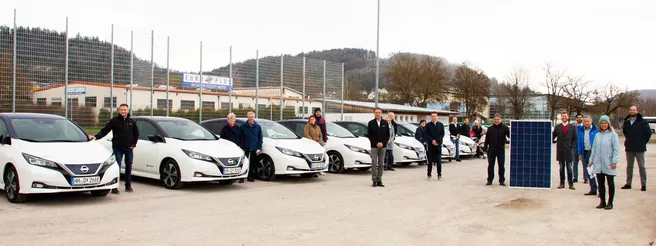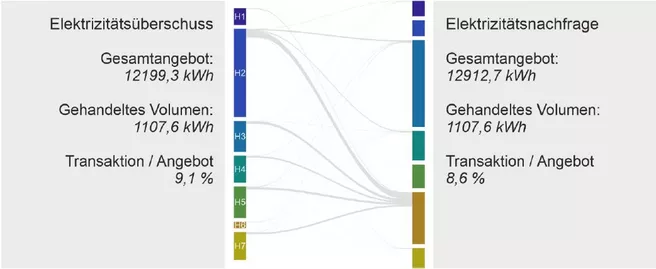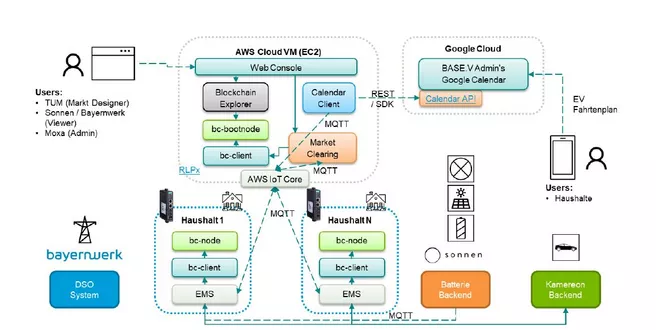To implement the project, industry partner Sonnen equipped Dietfurt households with photovoltaic systems, batteries and electric cars, as well as a charging station. Participants were able to buy and sell solar power via a central peer-to-peer trading platform.
The field trial confirmed that a few households are enough to get a neighborhood energy trade going. If economically incentivized, the mutual buying and selling of electricity can reduce consumption peaks and avoid bottlenecks, benefiting grid stability under smart control. BASE.V could thus be a model for reconciling fluctuating power generation and rising power consumption in the future without jeopardizing grid stability or supply security.
Bayernwerk Netz supported grid stability by dynamically adjusting grid charges. The control system followed the traffic light model of the German Association of Energy and Water Industries for grid bottlenecks in the power grid. When the light is green, there are no restrictions. Anyone who then has too much electricity can consume it themselves, feed it into the grid or sell it. When yellow, there is a threat of a grid bottleneck, which can be caused by high feed-in or high consumption. Bayernwerk Netz dynamically adjusted the grid charges in the yellow traffic light phase so that red traffic light phases could be reduced. Economic incentives thus led to more grid stability. The flexibility of stationary electricity storage and electric cars played an important role. When the light was red, there was no market. The distribution grid operator intervened in a controlling manner to prevent acute grid overload through Redispatch 2.0.
A unique feature of the model project was the goal of linking local electricity markets and active congestion management. The scientists were able to show that both households and the grid operator benefit from smart energy management. In the process, blockchain technology and communication protocols enabled synergies in decentralized energy systems to be identified and exploited. In the consortium, TUM contributed its expertise in energy networks and energy storage to successfully implement a smart energy management system. The researchers had also developed an energy management algorithm that influenced the charging strategy of the storage systems and electric cars. The local electricity market algorithms and dynamic price signals enabled households to trade with each other and reduce grid load in both simulations and the demonstrator.
Industry partners for the research project, which was funded by the Bavarian Ministry of Economic Affairs, were Bayernwerk Netz GmbH and Moxa Europe GmbH. The households traded via "smart contracts" processed through a blockchain gateway set up by computer and communications specialist Moxa. Sonnen played a key role as a subcontractor in the project.
Contact:
Chair of Electrical Energy Storage Technology: Andreas Jossen, Holger Hesse, Stefan Englberger
Associate Professorship Power Transmission Systems: Rolf Witzmann, Tariq Almomani


